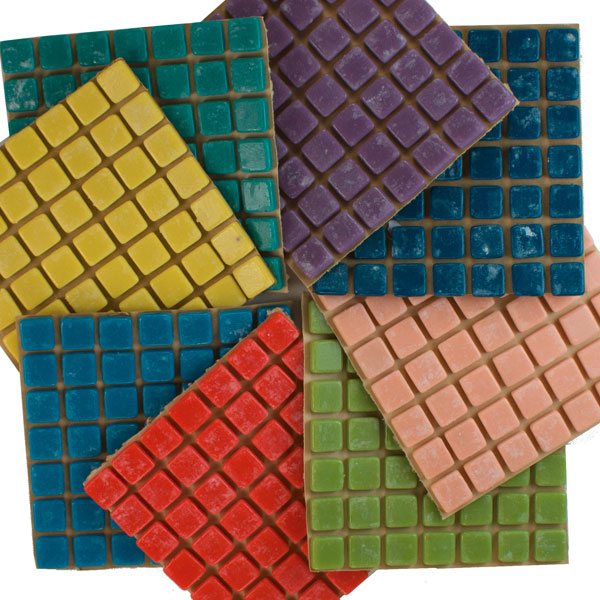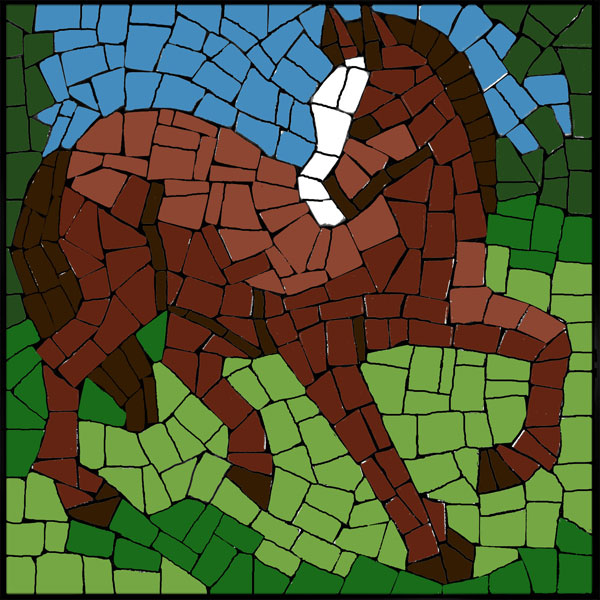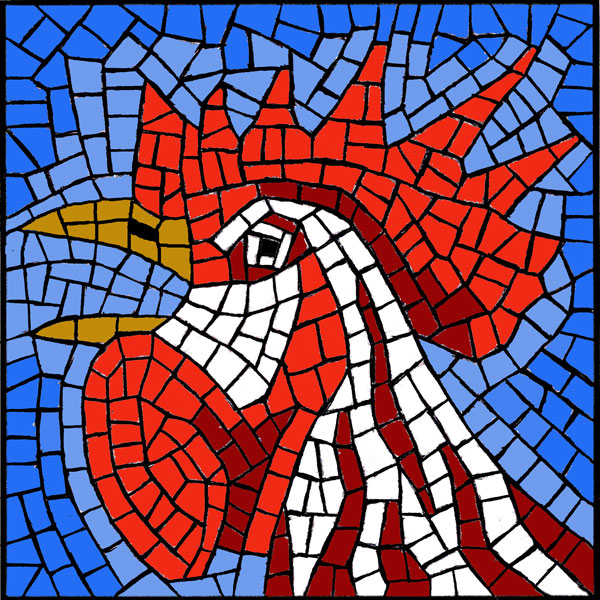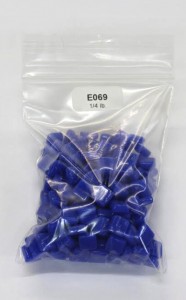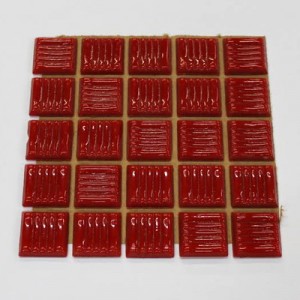These mosaic books are available through Amazon.com.
Clicking on a book will take you to Amazon. This browser window will remain open to complete any purchases for supplies here. These books are recommend for one or more of the following reasons:
- numerous illustrations of mosaic art.
- good explanations of mosaic techniques.
- interesting discussions of the history of mosaic art.
Encyclopedia Of Mosaic Techniques
by Emma Biggs
This is a useful guide to materials and techniques. The “A to Z of Techniques” section has detailed step-by-step instructions. Projects for indoors and outdoors are included, plus advice on setting up a workshop.
Making Mosaics: Designs, Techniques & Projects
by Leslie Dierks
A great book for beginners, this title covers different types of mosaic techniques including pique assiette work with broken plates. It also includes unique projects and step-by-step illustrations.
Classic Mosaic: Designs & Projects Inspired by 6,000 Years of Mosaic Art
by Elaine M. Goodwin
We often give this book as a gift to friends because it has so many good illustrations of a WIDE variety of mosaic styles. Highly recommended for pictures that inspire.
Making Mosaics (Step-by-Step Crafts)
by Martin Cheek
Martin Cheek is a professional artist and art instructor with impressive credentials. His book is an excellent guide for a beginner with lots of HOW-TO illustrations. Learn how to nip tile, glue and apply grout by looking at pictures.
Making Bits & Pieces Mosaics: Creative Projects for Home and Garden
by Marlene Hurley Marshall
Home and garden mosaic projects are where many mosaic artists get started, making this a great choice of guides. The projects are easy to follow and use everyday items, like broken dishes, ceramics and glass.
Mixed-Media Mosaics
by Laurie Mika
Mixed-media, collage and assemblage are a great marriage to mosaics. Highly recommended. The projects range from traditional surfaces like tables to shrines. Includes extensive techniques section and 18 step-by-step demos for all skill levels.
Mosaic Art and Style
by JoAnn Locktov
Hands-on experimentation is just one part of mosaic art. This book explores the theory, and goes inside the heads and workshops of several artists and explains how the projects were conceived from the artists’ points of view. This is invaluable insight for the technical-minded who wish to boost creative knowledge
Mosaics: Inspiration and Original Projects for Interiors and Exteriors
by Kaffe Fassett and Candace Bahouth
Uses glass, ceramic, broken china and tiles, mirror, pebbles, seashells, etc. This is not a traditional how-to approach, even though some projects have step-by-step instructions. Will need to be experimental and confident.
Ancient Mosaics
by Roger Ling
This book has 106 photos (47 color) that are all well chosen. Each illustrates a stylistic development in the evolution of mosaics, from the earliest Greek pebble mosaics to mosaics from different regions of the Roman world to the earliest Christian mosaics. A captivating book.
The Weekend Crafter
by Martin Cheek
This is perhaps the best book for a beginner. From the questions we receive via email, the biggest problem beginners have is not knowing how to plan a project and how to keep it simple. This book should help tremendously. It also explains how to make your own designs with examples.
The Mosaic Idea Book
by Rosalind Wates, Paul Forrester, Martin Norris
This is one of the best books for mosaic patterns. There are many designs to use and it is also a great source of inspiration for your own ideas.
Outdoor Mosaic: Original Weather-Proof Designs to Brighten Any Exterior Space
by Emma Biggs and Tessa Hunkin
Step-by-step instructions and good designs for outdoor mosaics. Detailed discussions of materials and techniques for making mosaics last through rain, seepage, freeze.
Mosaics of the Greek and Roman World
by Katherine M. D. Dunbabin
This book is reviewed very highly on Amazon for its use of illustrations to explain the history of mosaics in the Graeco-Roman world. Lots of pictures of mosaics in classical styles.
Mosaic Techniques & Traditions: Projects & Designs from Around the World
by Sonia King
Practical info plus artistic inspiration. Chronicles the history of mosaics in Europe, Africa and the Americas, followed by instructions, materials, tools, techniques and design. Includes five projects of varying difficulty.
Found Art Mosaics
by Suzan Germond
Found materials are alive, striking and offer a chance for contemplation. Also, found art is recycled art. This is a great way to break out of the limitations of traditional materials and experiment with mosaics in a new way. Includes 27 unique, interesting projects.
The Mosaic Book: Ideas, Projects and Techniques
by Peggy Vance, Celia Goodrick-Clarke
Unique book combines projects by several artists, from jewelry to floors. Also has photographs of other mosaic work in amazing architectural interiors and gardens-probably the best aspect of this book. The projects are explained step-by-step, and so are the tools and techniques.
Mosaic Crafts: Twenty Designs for the Modern Home
by Martin Cheek
All of Martin’s Cheek’s mosiac books are well-loved in mosaic crowds, and the latest is no different. This is a set of 20 new designs that all have a clean, modernist feel. Great for those who want simple yet without sacrificing the high-design element.
Mosaic Today: Create Contemporary Projects Using New and Recycled Material
by Elaine M. Goodwin
Includes 16 great projects and each page features at least one historical mosaic masterpiece with an attached history lesson. Includes color photographs of the finished pieces plus step-by-step instructions. Some experience is necessary.
Beyond the Basics: Mosaics
by Elizabeth DuVal
Focused on home decor and is a good reference for learning to work on different-shaped surfaces and deciding how to select pieces that produce the best textures and effects. Projects range from shellwork and picassiette to projects for platters, mirrors, patios, backsplashes, memory boxes, lamps, etc.
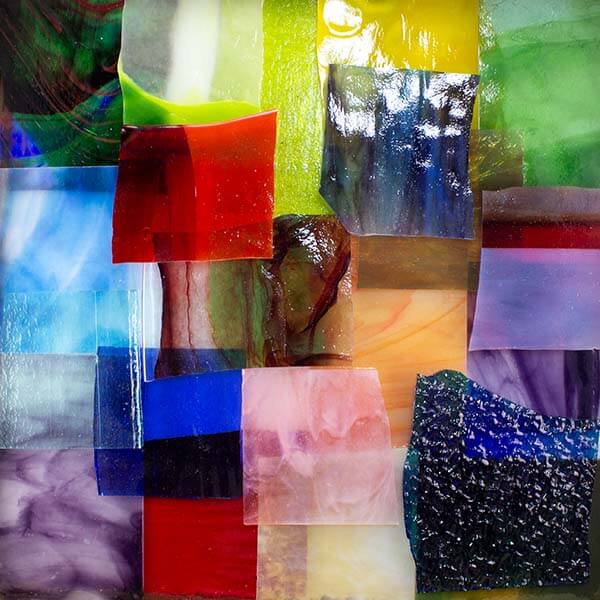
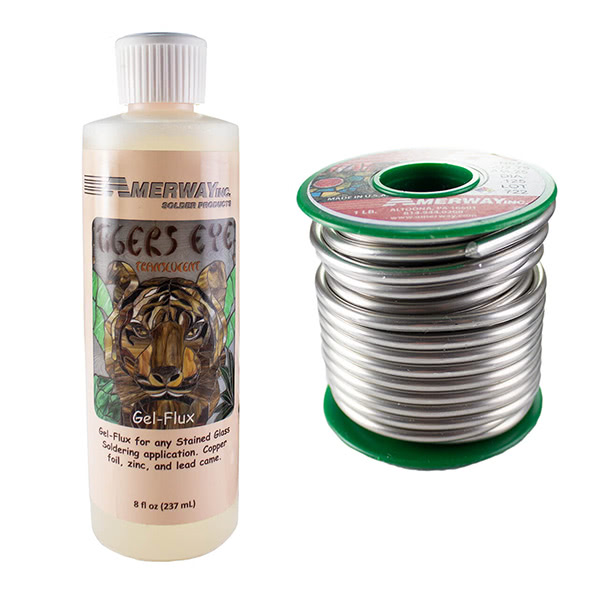
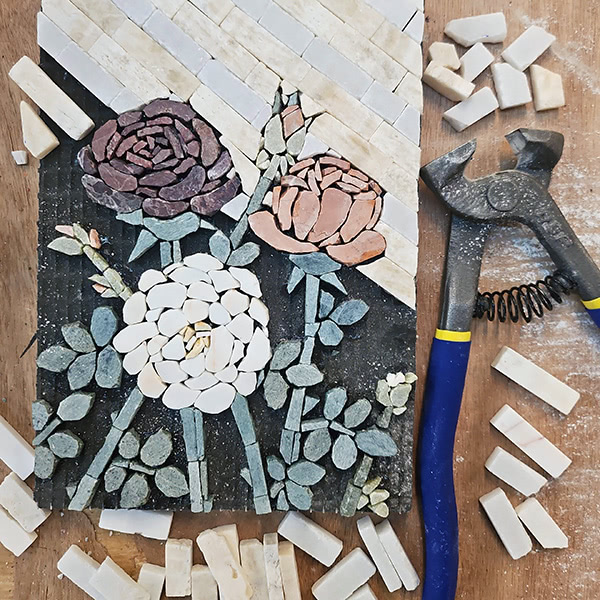
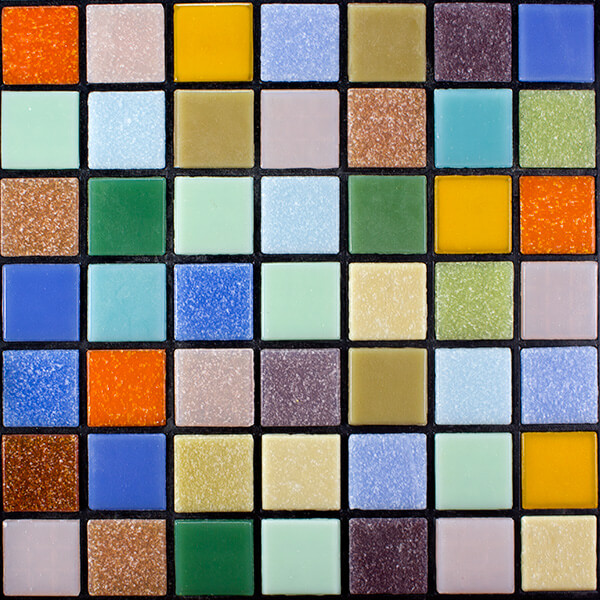
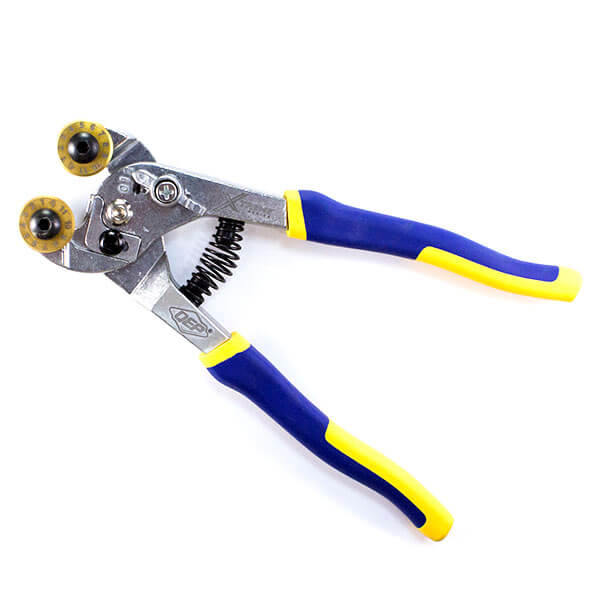
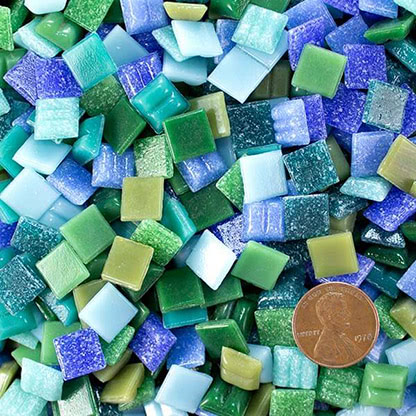
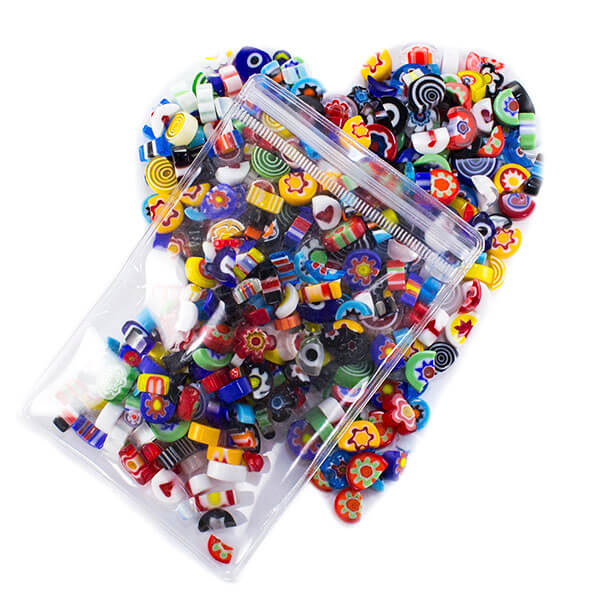
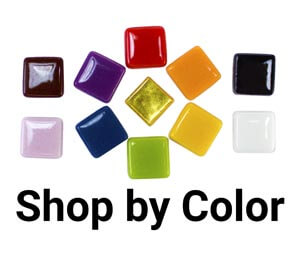
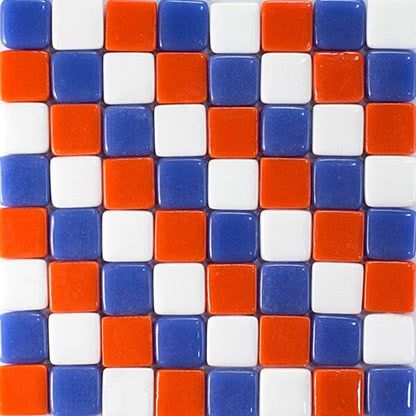
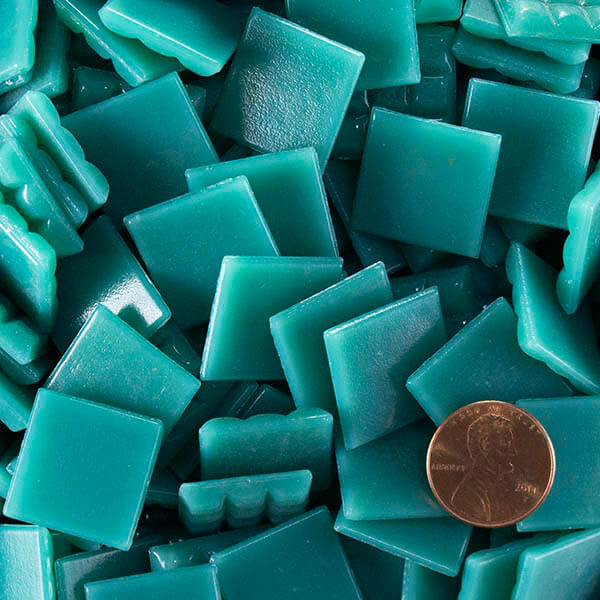
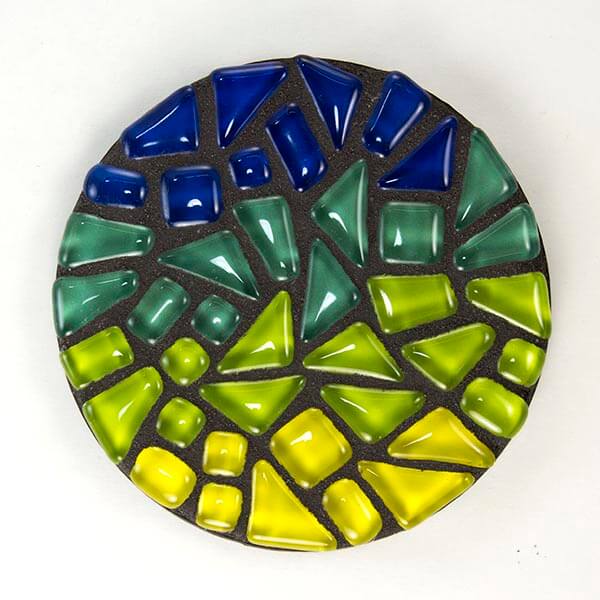
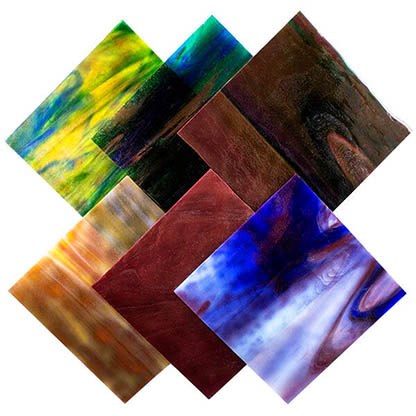


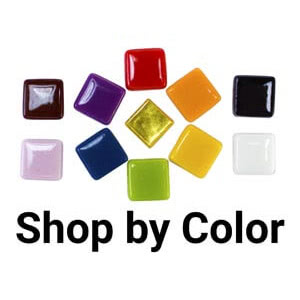
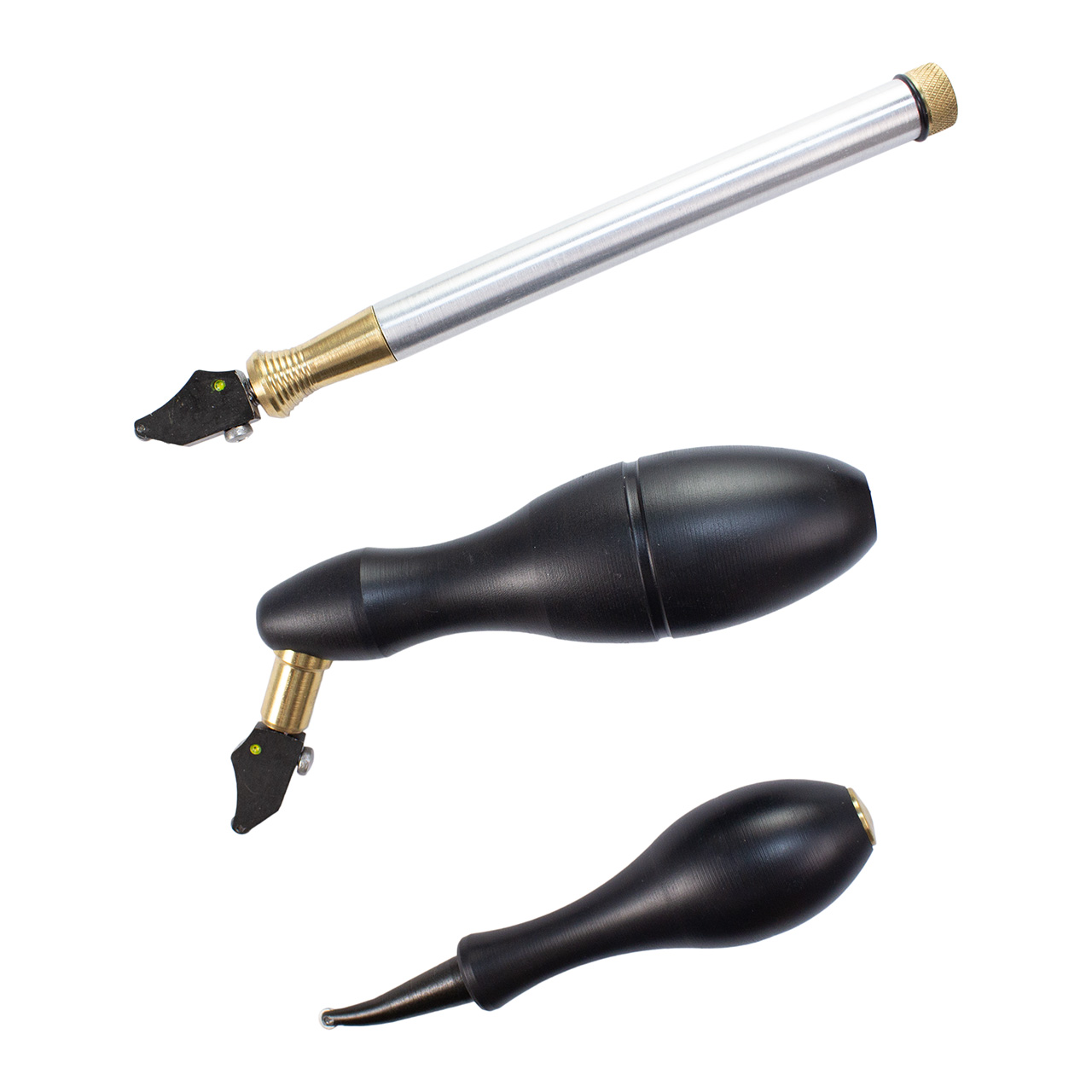
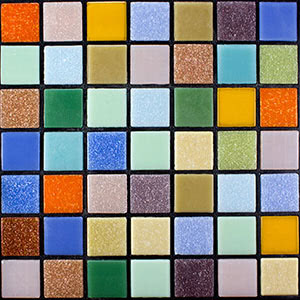
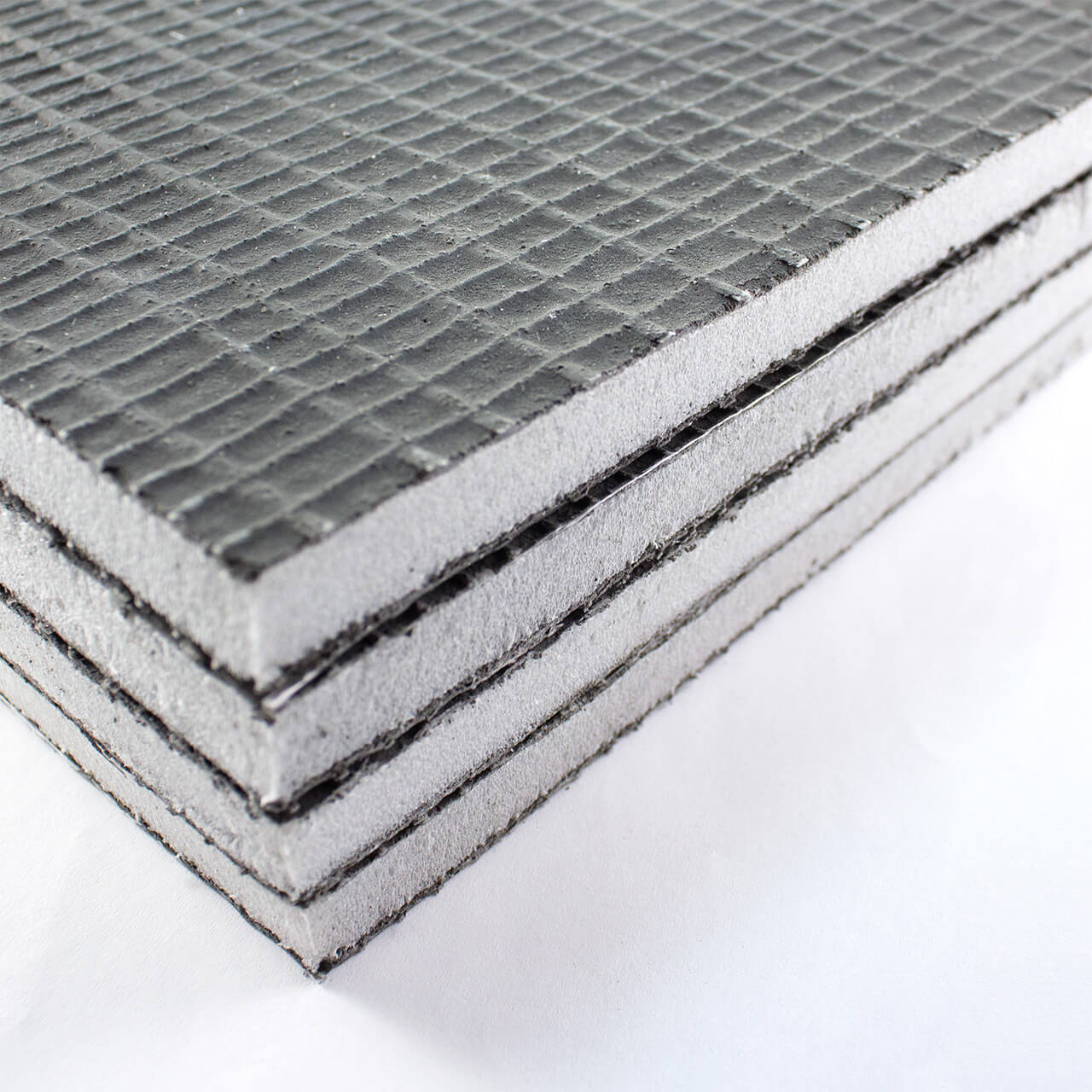
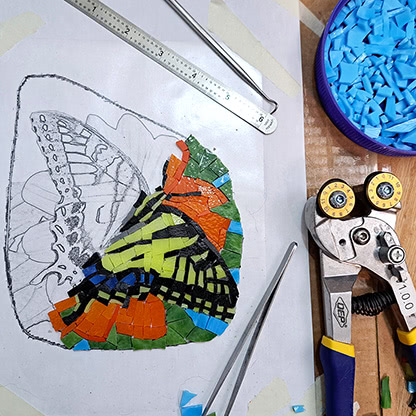
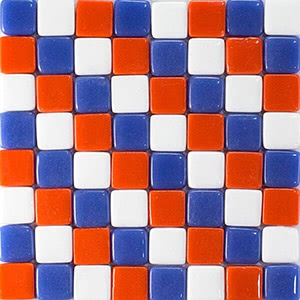
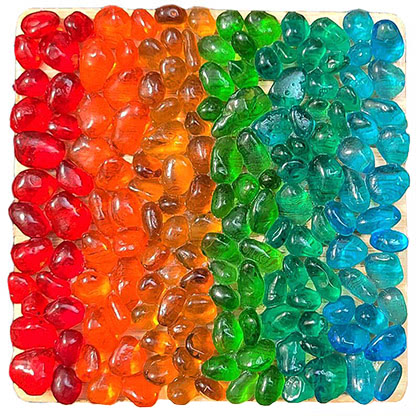
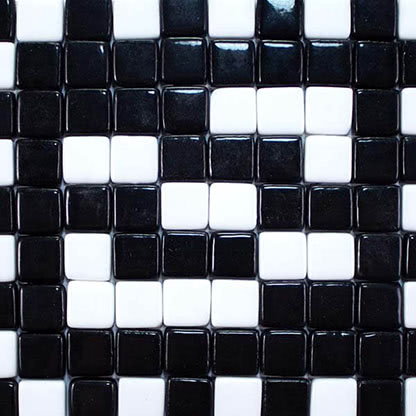
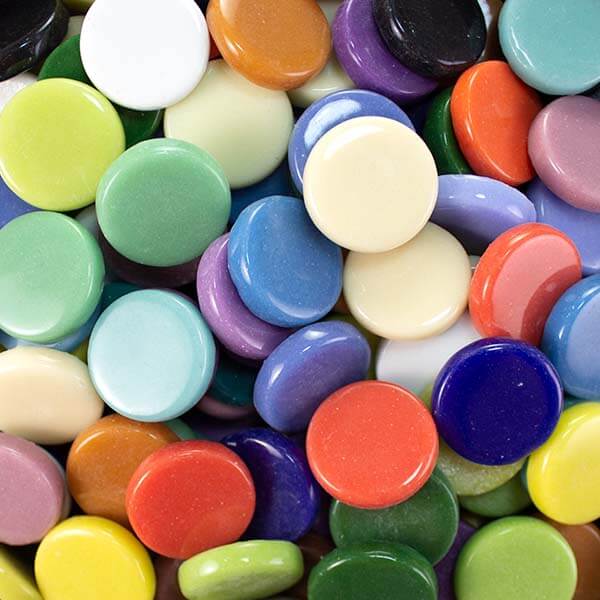
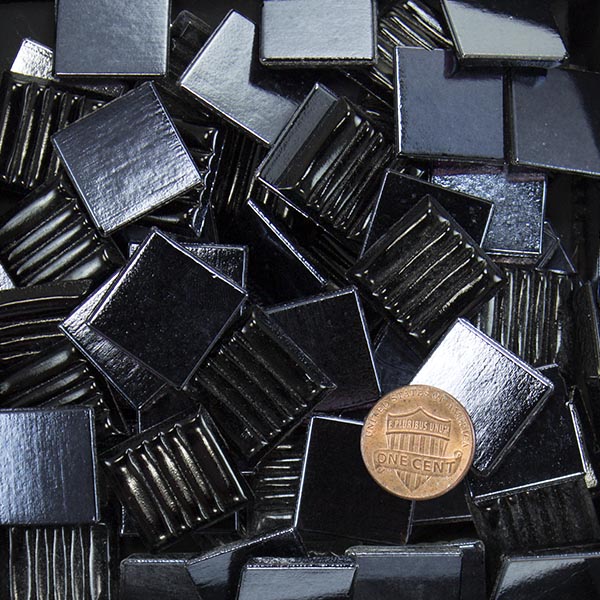
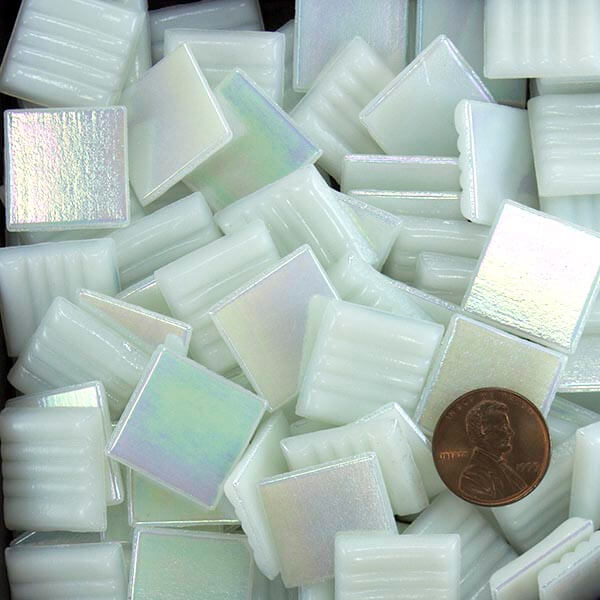
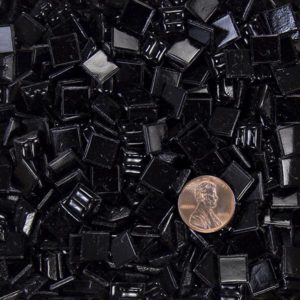
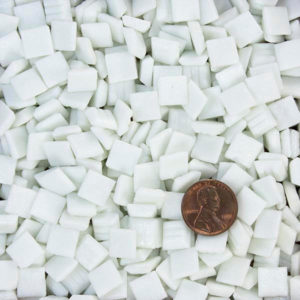
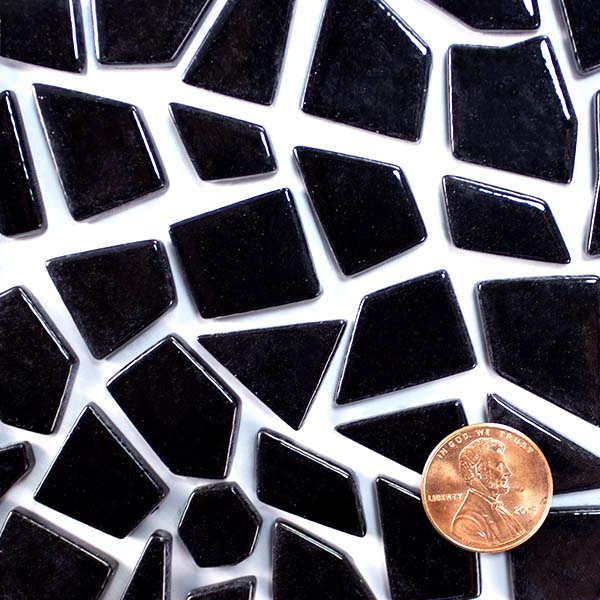
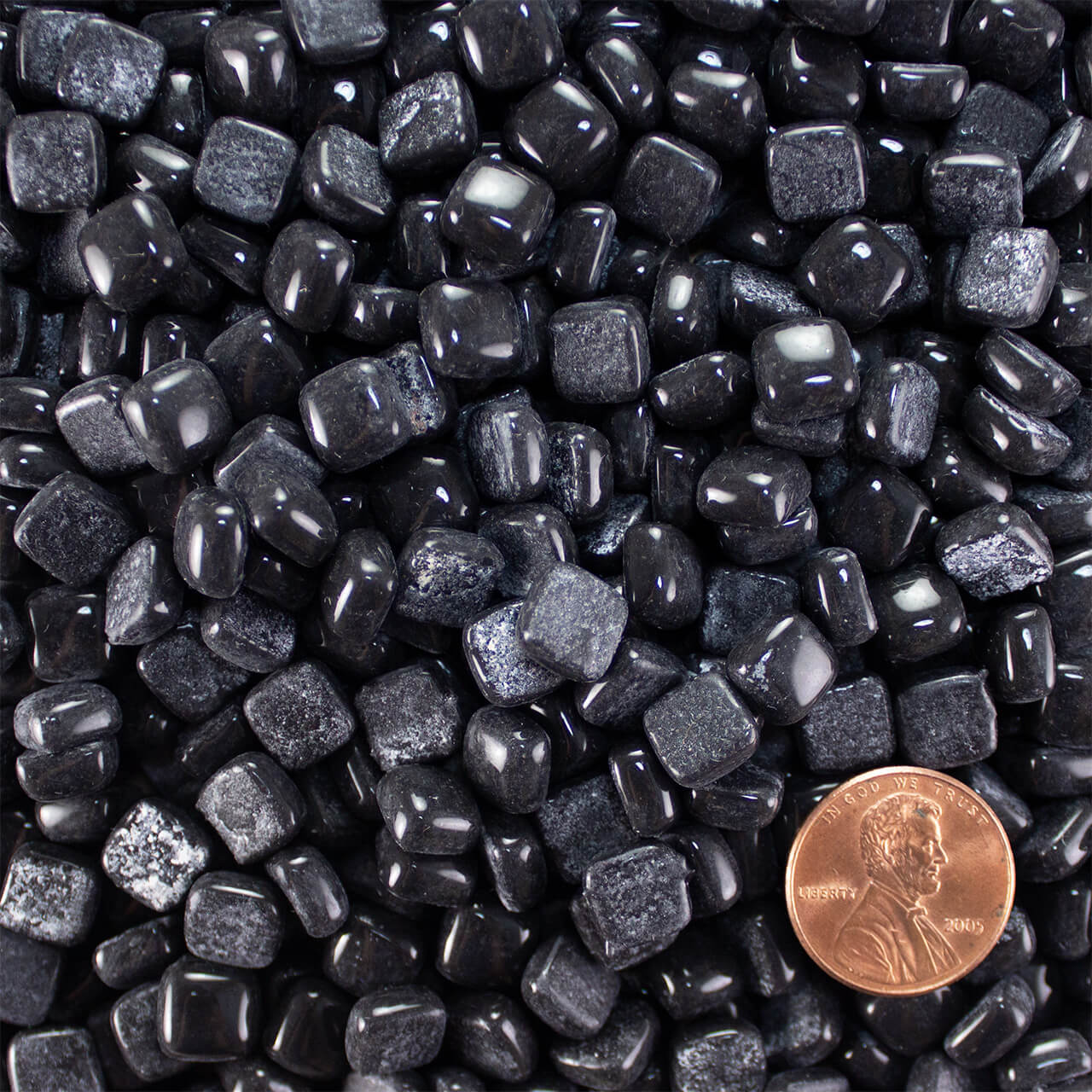
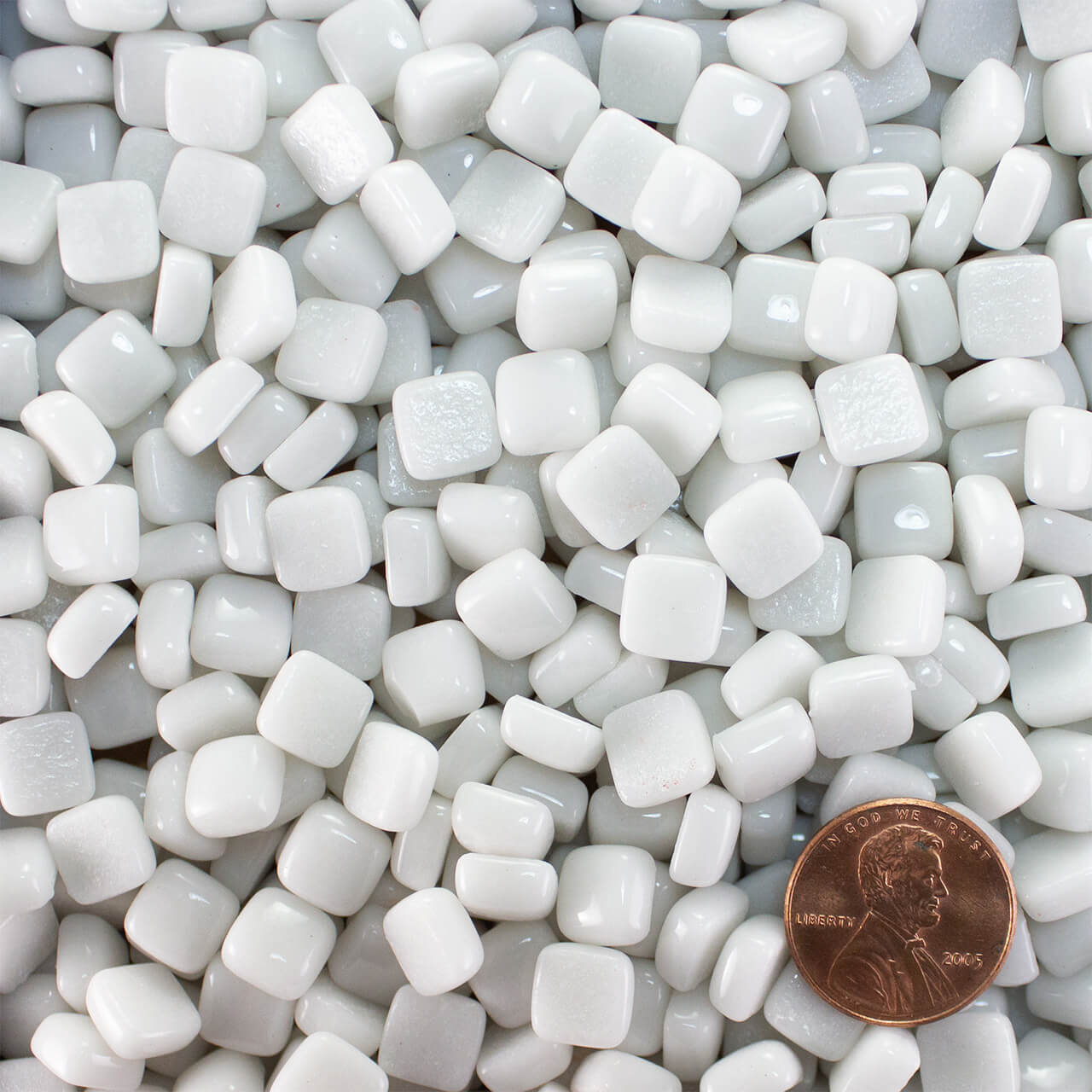
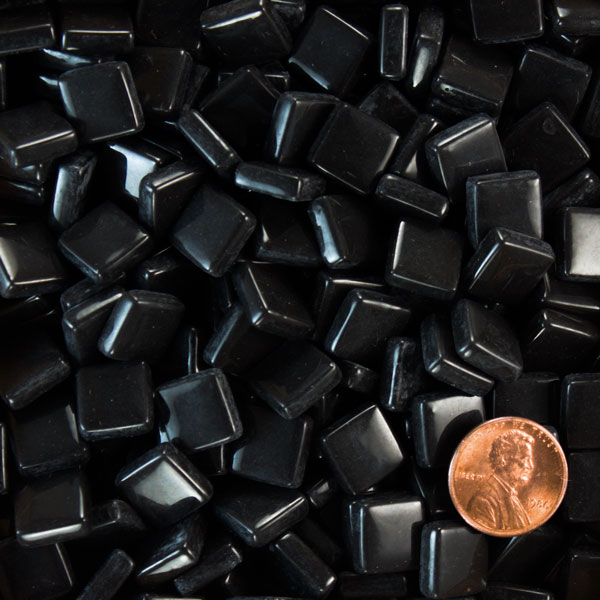
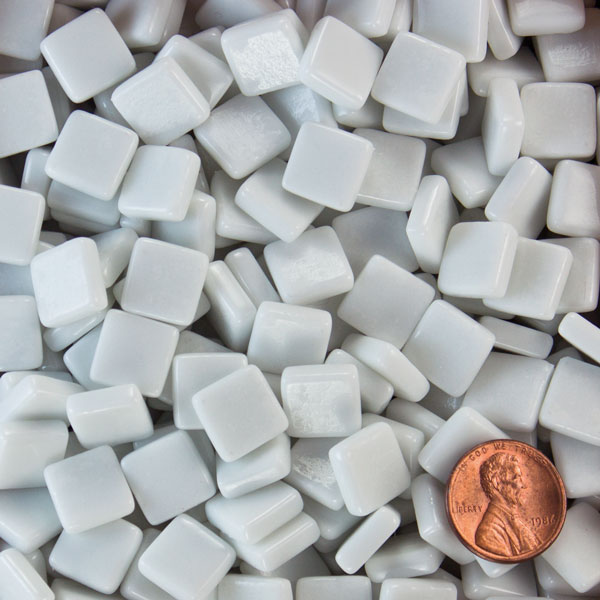
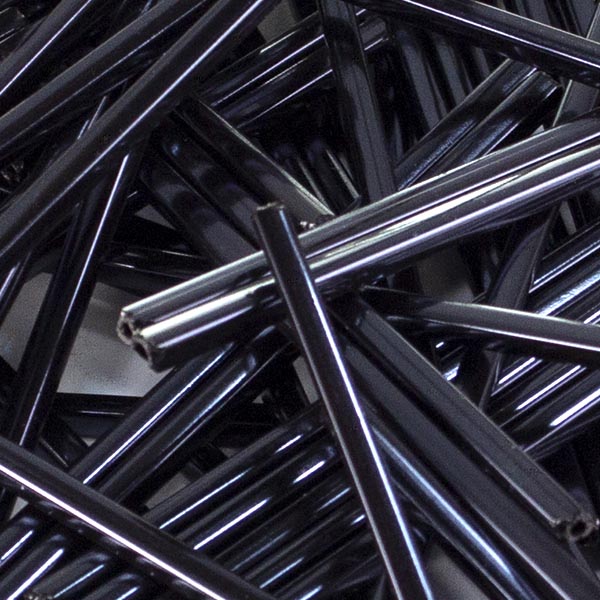
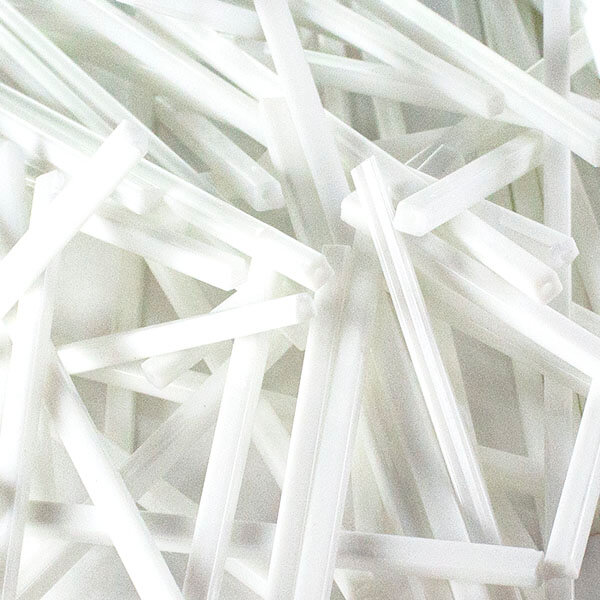
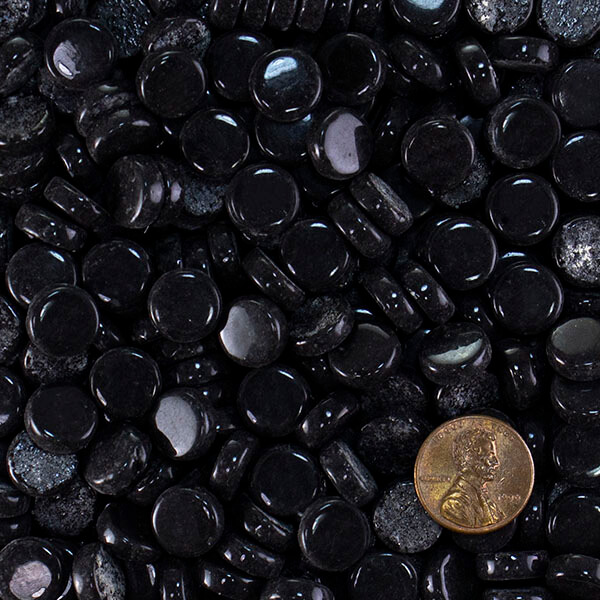
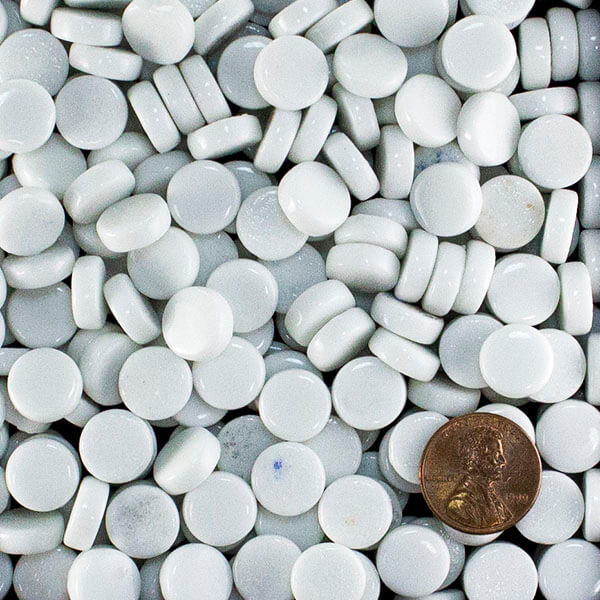
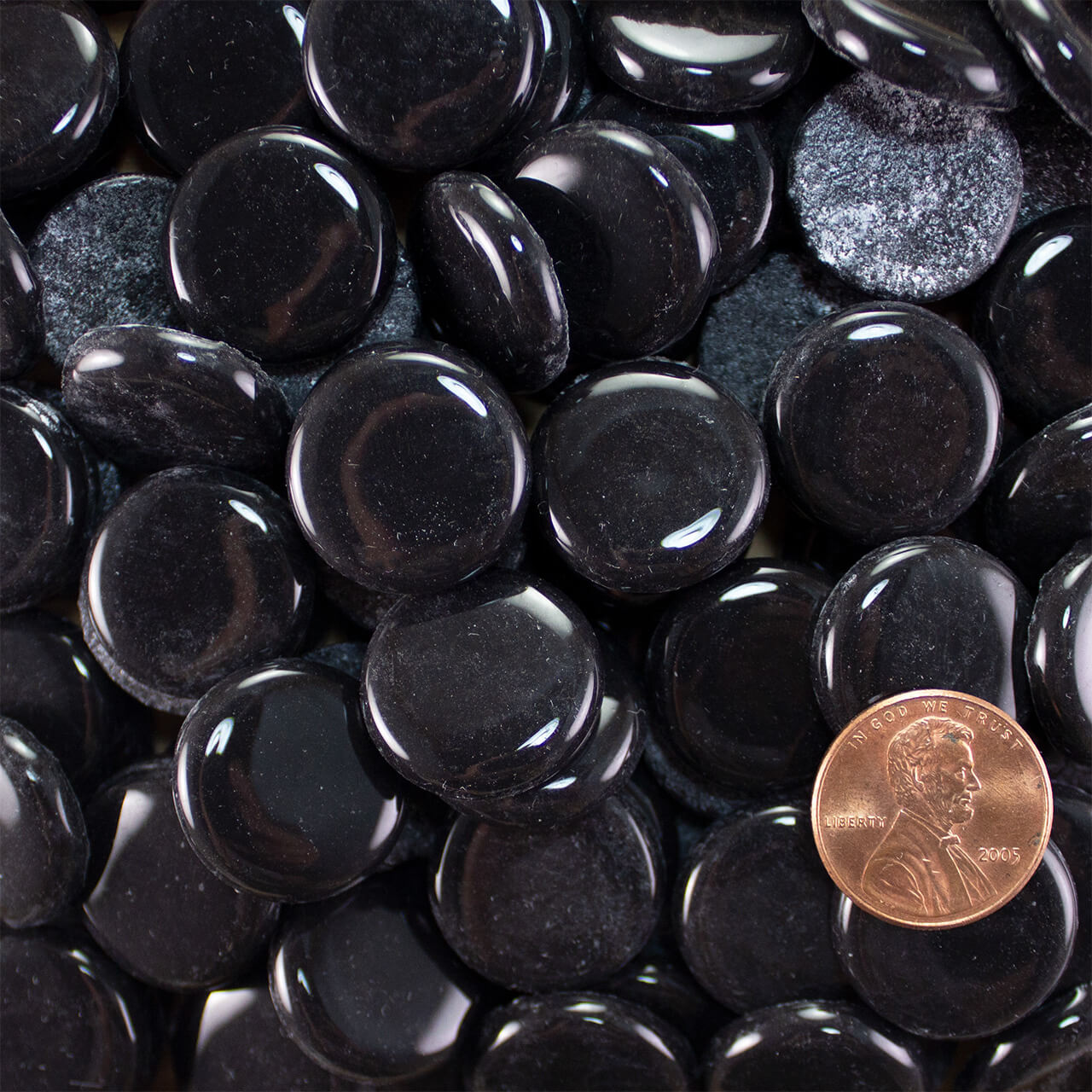
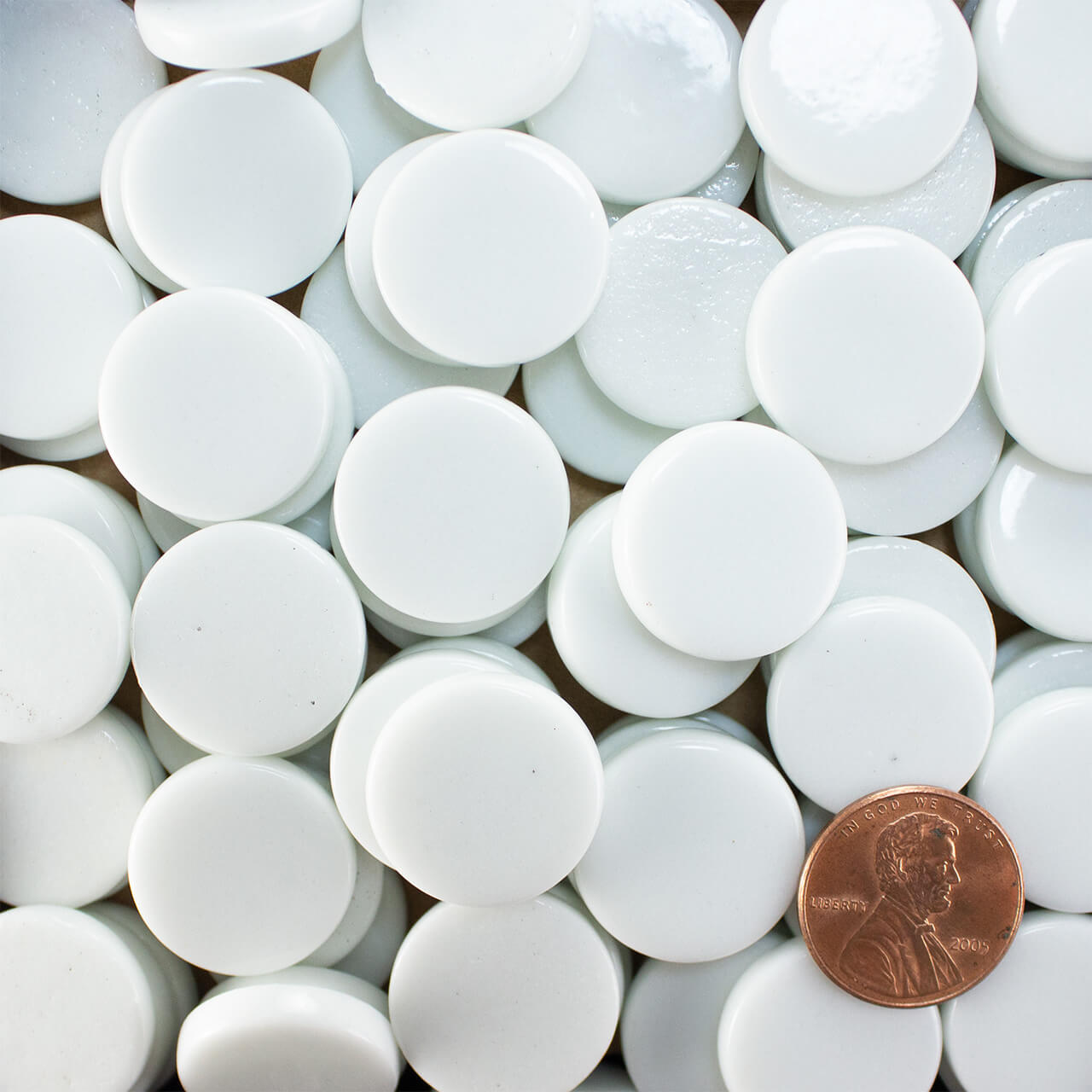
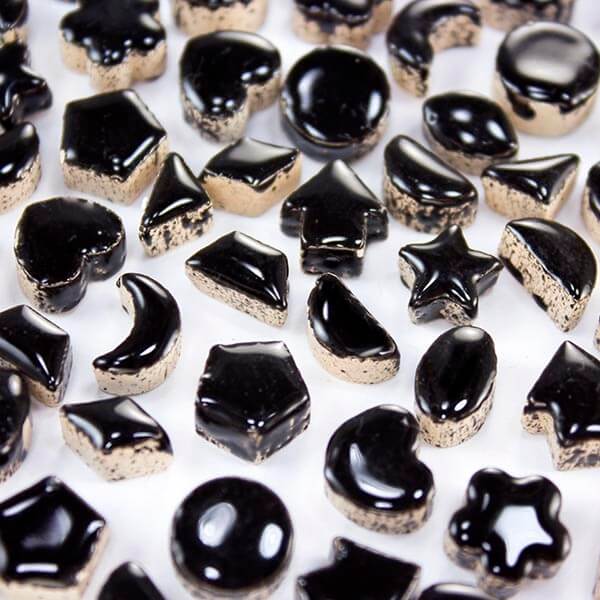
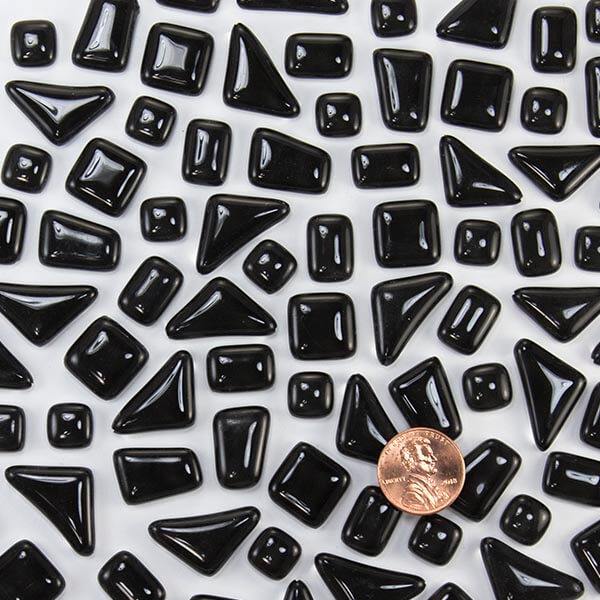
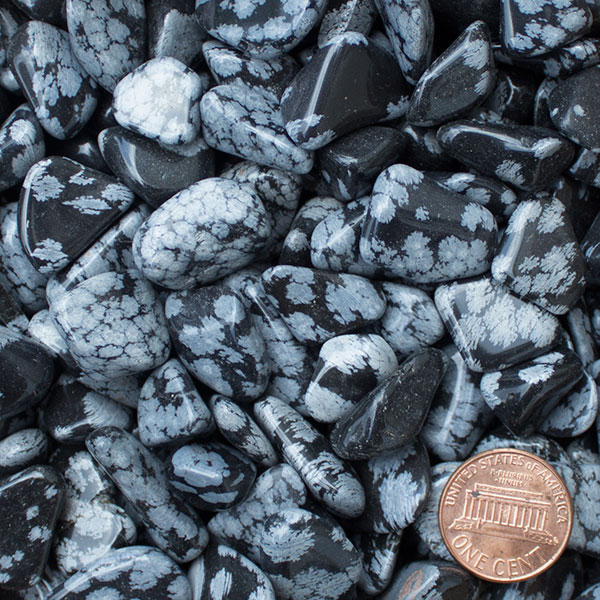
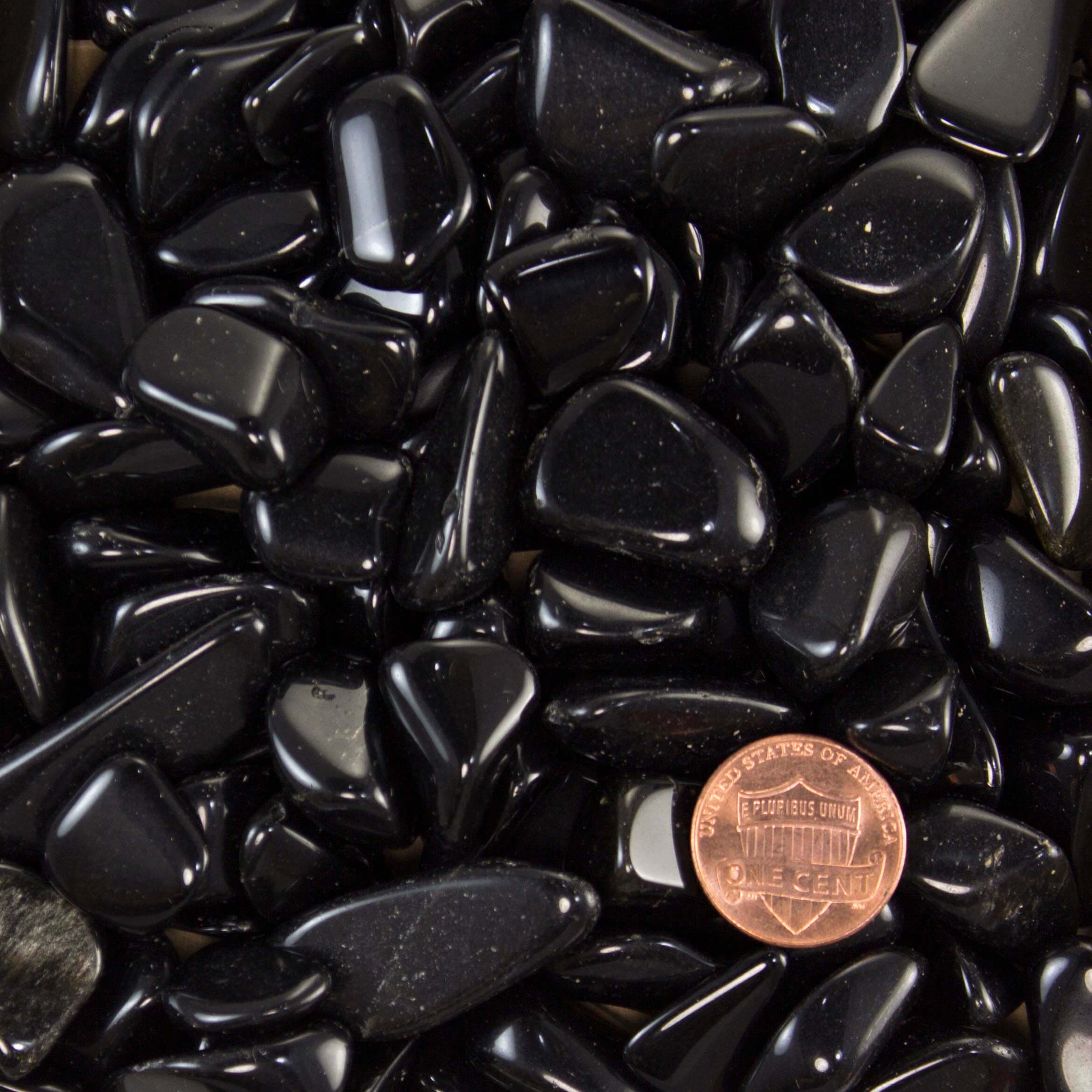
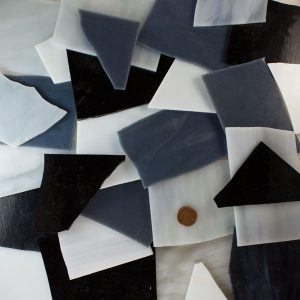

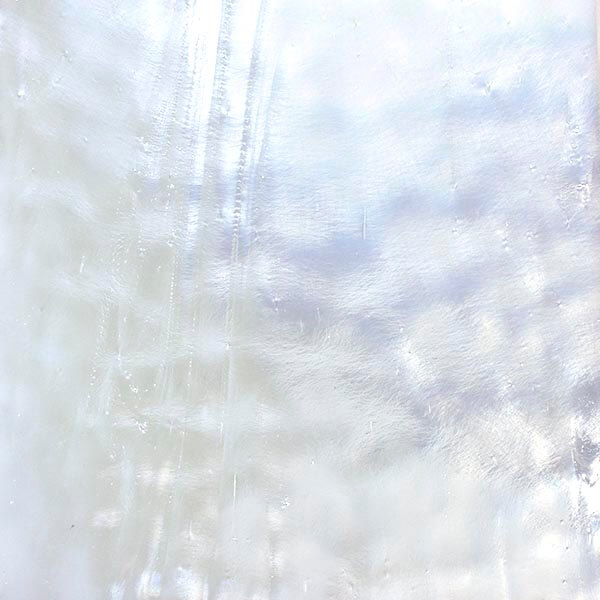

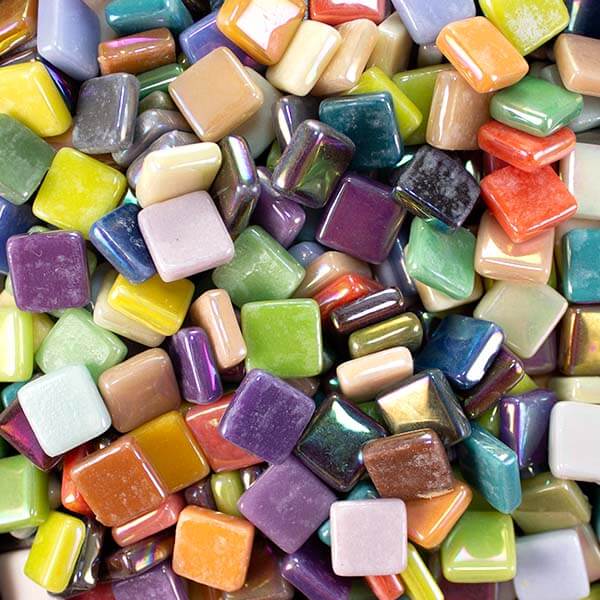 IRIDESCENT ASSORTMENT of Morjo ™ 12mm Recycled Glass Mosaic Tile is sold LOOSE by the pound, which is different from the individual colors. This 1-POUND should have about 320+ loose tiles. The tiles have a glossy finish, and the glass has solid color throughout (and not just on the tops or bottoms.) They are opaque when mounted on an opaque surface.
These wonderful tiles cut cleanly into tiny pieces with minimal waste, and so they are an ideal material for micromosaic artwork. They are hard and durable and UV-resistant and can be used for the exteriors of commercial buildings. The fusing process for making these tiles from powdered recycled glass is referred to as “warm glass” or “enamel glass” or “pate de verre.”
IRIDESCENT ASSORTMENT of Morjo ™ 12mm Recycled Glass Mosaic Tile is sold LOOSE by the pound, which is different from the individual colors. This 1-POUND should have about 320+ loose tiles. The tiles have a glossy finish, and the glass has solid color throughout (and not just on the tops or bottoms.) They are opaque when mounted on an opaque surface.
These wonderful tiles cut cleanly into tiny pieces with minimal waste, and so they are an ideal material for micromosaic artwork. They are hard and durable and UV-resistant and can be used for the exteriors of commercial buildings. The fusing process for making these tiles from powdered recycled glass is referred to as “warm glass” or “enamel glass” or “pate de verre.” 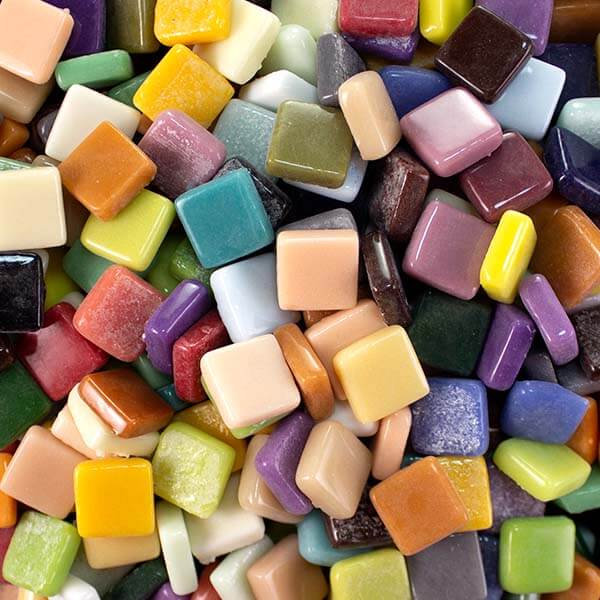 MULTICOLOR ASSORTMENT of Morjo ™ 12mm Recycled Glass Mosaic Tile is sold LOOSE by the pound, which is different from the individual colors. This 1-POUND should have about 320+ loose tiles. The tiles have a glossy finish, and the glass has solid color throughout (and not just on the tops or bottoms.) They are opaque when mounted on an opaque surface.
These wonderful tiles cut cleanly into tiny pieces with minimal waste, and so they are an ideal material for micromosaic artwork. They are hard and durable and UV-resistant and can be used for the exteriors of commercial buildings. The fusing process for making these tiles from powdered recycled glass is referred to as “warm glass” or “enamel glass” or “pate de verre.”
MULTICOLOR ASSORTMENT of Morjo ™ 12mm Recycled Glass Mosaic Tile is sold LOOSE by the pound, which is different from the individual colors. This 1-POUND should have about 320+ loose tiles. The tiles have a glossy finish, and the glass has solid color throughout (and not just on the tops or bottoms.) They are opaque when mounted on an opaque surface.
These wonderful tiles cut cleanly into tiny pieces with minimal waste, and so they are an ideal material for micromosaic artwork. They are hard and durable and UV-resistant and can be used for the exteriors of commercial buildings. The fusing process for making these tiles from powdered recycled glass is referred to as “warm glass” or “enamel glass” or “pate de verre.” 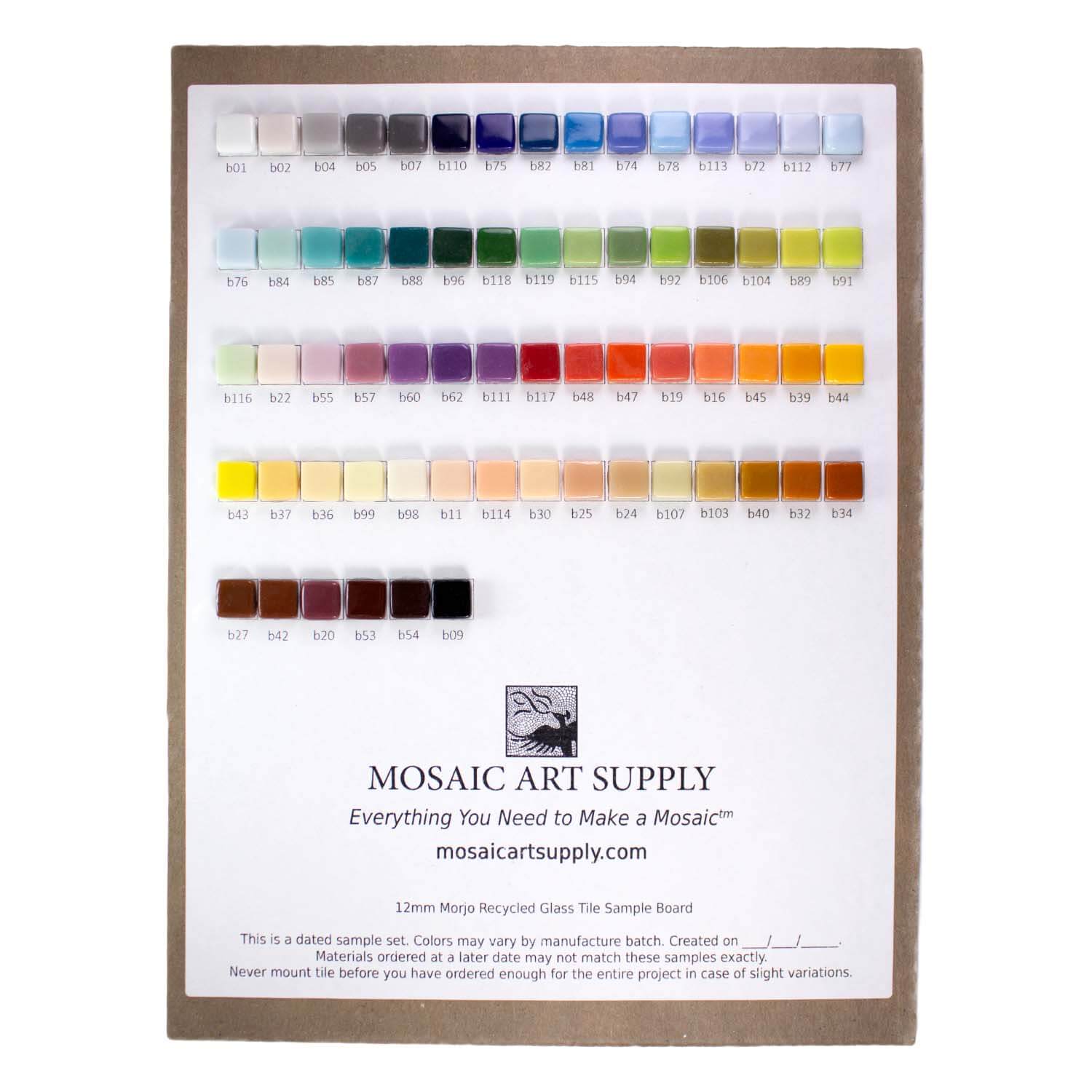 12mm Recycled Glass Mosaic Tile by MORJO Mosaic Tile™ are sold on removable paper sheets of 49 tiles glued face down with chalky-backs showing. (Remove by paper and chalky mold release by soaking for about 1/2 hour.) Each sheet covers approximately 1/11 of a square foot assuming a grout gap of 1/16 inch. These tiles have a glossy finish, and the glass has solid color throughout (and not just on the tops or bottoms.) Opaque when mounted on an opaque surface. Back sides are chalky, but they wash clean when the paper is soaked off the faces. More details below:
12mm Recycled Glass Mosaic Tile by MORJO Mosaic Tile™ are sold on removable paper sheets of 49 tiles glued face down with chalky-backs showing. (Remove by paper and chalky mold release by soaking for about 1/2 hour.) Each sheet covers approximately 1/11 of a square foot assuming a grout gap of 1/16 inch. These tiles have a glossy finish, and the glass has solid color throughout (and not just on the tops or bottoms.) Opaque when mounted on an opaque surface. Back sides are chalky, but they wash clean when the paper is soaked off the faces. More details below:
